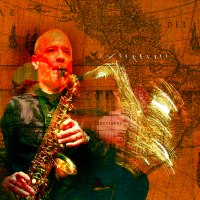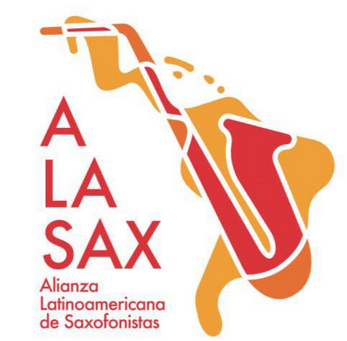
Saxofón Latinoamericano
El saxofón en américa latina
Saxofón Latinoamericano
La investigación sobre el saxofón en el contexto de la creación musical contemporánea de América Latina ha sido una preocupación permanente del trabajo artístico y docente del Dr. Miguel Villafruela, con el propósito permanente de ampliar el repertorio para el instrumento e incentivar la motivación hacia la creación de obras para el saxofón de parte de los compositores latinoamericanos.
En ese sentido, esta publicación Saxofón Latinoamericano tiene entre otros objetivos, a difundir la creación de los compositores latinoamericanos para saxofón e informar todo lo relacionado con el repertorio para el instrumento, existente en esta región del mundo.
Esta página es la primera edición para Internet que aborda el tema del saxofón en América Latina y a la vez se convierte en la actualización y renovación constante de su libro El Saxofón en la Música Docta de América Latina.
Obra escogida
| Compositor | Delgado, Carlos ( ) |
|---|---|
| Pais | Argentina |
| Obra | Fugaz (1996) |
| Formato | Saxofón solo |
| Instrumentación | Saxofón alto amplificado |
| Dedicado a: | Emil Sein |
| Comentarios | Fugaz was written in the spring of 1996 for virtuoso saxophonist and clarinetist Emil Sein, who premiered it in New York City on April 17, 1996 at the Frederick Loewe Theater. It has also been played in concert by René Mogensen and Ulrich Krieger. Fugaz was awarded the 1997 Society of Composers, Inc's Compact Disc Series Award, and was recorded by René Mogensen on Capstone Records. _x000d__x000d_In the November / December 1998 issue of the American Record Guide, Mark L. Lehman writes "I enjoyed Fugaz: it’s fresh, unpretentious, inventive, exuberant—and concise". and "sonics on Fugaz are exceptional—that souped-up sax sounds like it’s in the room with you." _x000d__x000d_Fugaz means "fleeting", understood as "passing quickly". This piece conveys the flavor of the ephemeral by exploring several different implications of that idea: an impression of agile movement, the sense of mystery inherent in something that disappears before it can be fully understood, the wonderment that arises from unexpected, sudden change, the lure of that which can never be grasped. _x000d__x000d_In order to integrate the aesthetic goals of the work with the physical act of performing it, an amplification system consisting of four microphones arranged in the shape of a semi-circle is used. Each microphone is routed to a different signal processing unit. Through his/her movements, the performer is able to control the displacement of sound across the stereo field, as well as its timbral quality. This arrangement allows for the organic realization of the spatial dimension of the work by enabling the performer to integrate on-stage movement with the motion, direction, and timbre of the sound. Tomado de la página web de Carlos Delgado http://users.bestweb.net/~cdelgado/ |

